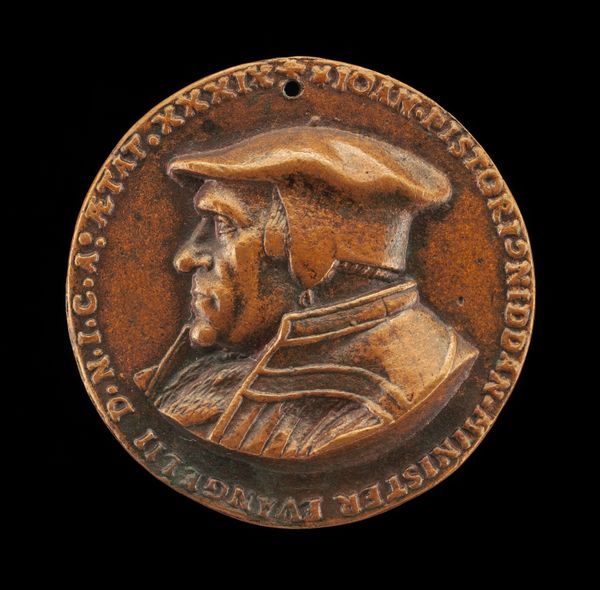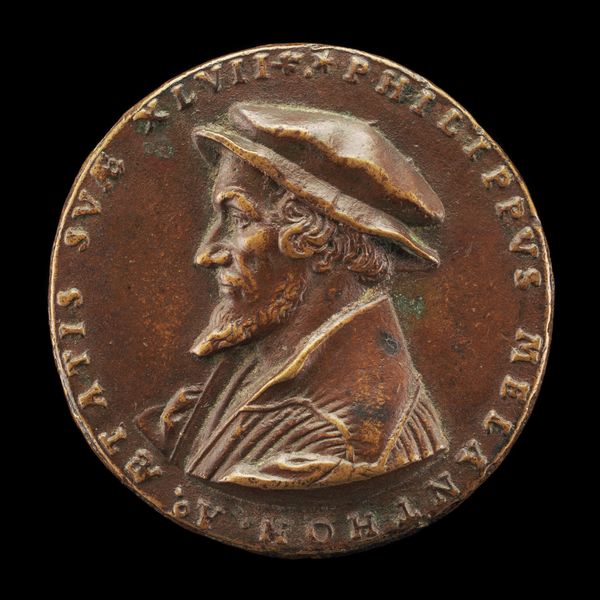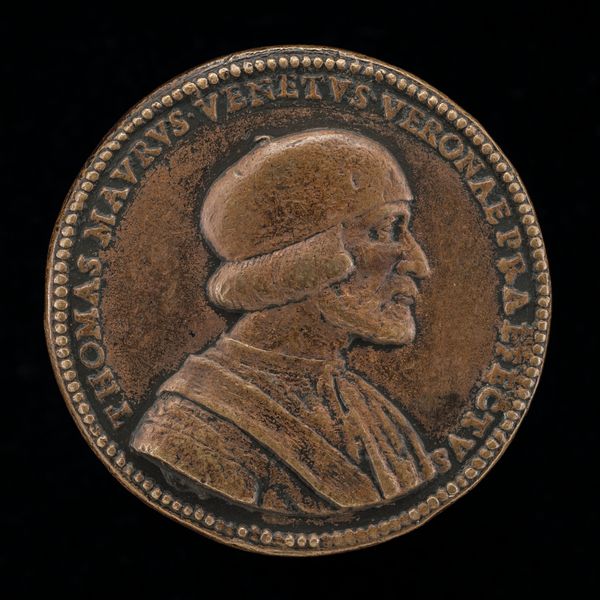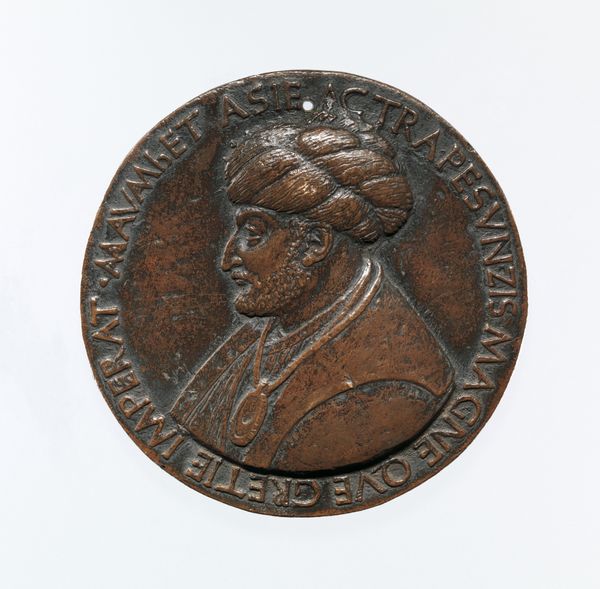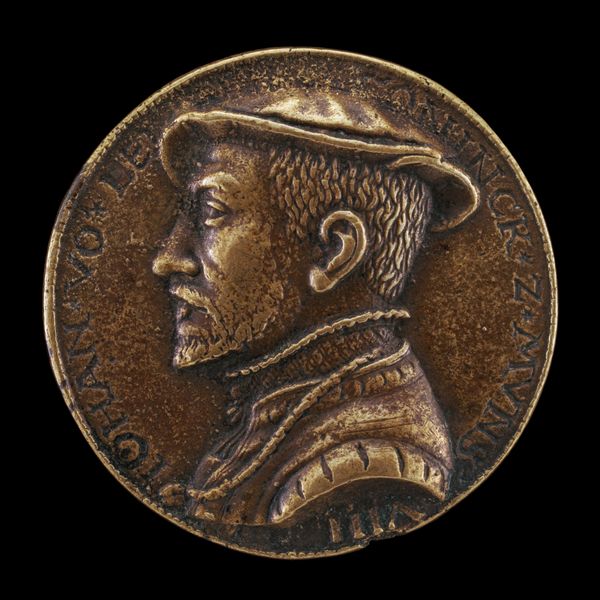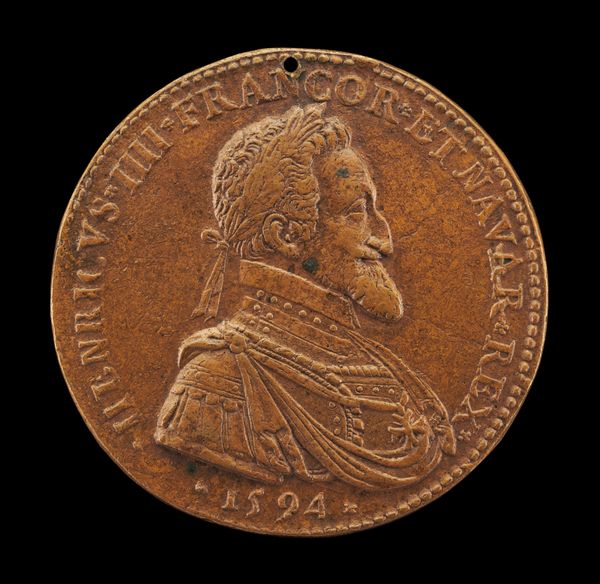![Hans Hauschel, born 1520 [obverse] by Friedrich Hagenauer](/_next/image?url=https%3A%2F%2Fd2w8kbdekdi1gv.cloudfront.net%2FeyJidWNrZXQiOiAiYXJ0ZXJhLWltYWdlcy1idWNrZXQiLCAia2V5IjogImFydHdvcmtzL2IyMWMyYmRjLWFmNzgtNDJkYy05OTViLTk4ODhhZTQyNDkwNC9iMjFjMmJkYy1hZjc4LTQyZGMtOTk1Yi05ODg4YWU0MjQ5MDRfZnVsbC5qcGciLCAiZWRpdHMiOiB7InJlc2l6ZSI6IHsid2lkdGgiOiAxOTIwLCAiaGVpZ2h0IjogMTkyMCwgImZpdCI6ICJpbnNpZGUifX19&w=3840&q=75)
Dimensions: overall (diameter): 3.89 cm (1 9/16 in.) gross weight: 13.18 gr (0.029 lb.) axis: 12:00
Copyright: National Gallery of Art: CC0 1.0
Curator: Here we have a bronze relief medal from 1544 depicting Hans Hauschel, born 1520. It was crafted by Friedrich Hagenauer. Editor: It has this quiet, weighty presence, doesn't it? You can almost feel the cool, solid touch of the bronze. And there’s this incredible detail—look at the way his cap is rendered. Curator: Absolutely. Hagenauer was clearly aiming for more than just a likeness. Portrait medals like these became quite fashionable during the Renaissance, often commissioned by or for the sitter themselves to enhance social standing and legacy. Editor: These objects have a function – it's more than a portrait; it’s propaganda. The production of such an item is bound to economics. Bronze isn't exactly cheap. Think about the skills involved: the sculpting of the mold, the metal casting, the chasing and finishing... the material reality of that bronze and the labor involved is immense. Curator: Precisely, they acted almost as portable calling cards, circulating images of powerful or influential people. Hauschel must have held some degree of status to warrant this kind of commemoration. These works give us valuable insights into the period. Editor: I’m drawn to the physical object itself. Imagine the touch of the artist. Look closely at the relief – you can practically see the tooling marks. The controlled pressure needed to coax that metal into such detailed form. Curator: Hagenauer seems to have adopted and further popularized this type of small bronze relief, focusing predominantly on the merchant class and learned elites within burgeoning urban centers of commerce and exchange in the 16th century. Editor: Yes, and don't overlook how multiples of such a relief may be made through molds and other means; this pushes up questions about value, access, distribution and how artisanal expertise informs the processes behind bronze artworks and medals. It invites inquiry regarding modes of exchange and the means through which images gain wider recognition at this time. Curator: Ultimately, this object encapsulates so many layers of Renaissance society: ambition, artistry, and the emerging power of the individual. Editor: Yes, from material process, the making, and the conditions of labor to their place of exhibition and trade, we gain insights into the ways art assumes a public role.
Comments
No comments
Be the first to comment and join the conversation on the ultimate creative platform.
